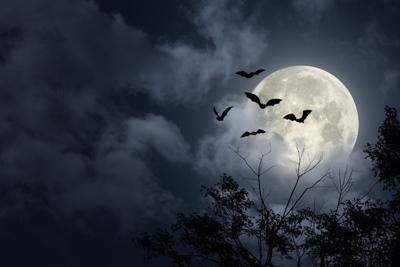From Count Dracula to Edward Cullen, vampires have been a major reoccurring component of legends and folklore passed around the world for centuries.
In fact, vampire lore has been so ubiquitous across the globe at different times in history, that many regions practiced special burials for people believed to be vampires, so they could not come back to life after death.
One of the earliest recordings of 'blood-drinkers' was from Italy at around 1576. A grave was discovered from this era in 2006. It held the remains of an adult woman that had brick shoved through her teeth and jaw—a known vampire deterring practice for the time.
Believe it or not, Colorado also has its own vampire story that's been passed down through the years.
There's limited information Todor Glava, a man buried in an old cemetery in Lafayette, Colorado, but rumors persist that he may have been a vampire.
What is known is that Glava was an immigrant from Romania who settled in Colorado in the early 1900s. He also reportedly worked as a coal miner during his life, tall, pale, and thin, according to some reports.
Glava later died in December of 1918 during the peak of the Spanish Flu Pandemic, a disease that claimed the lives of an estimated 50 million people worldwide.
Today, his simple, hand-carved headstone reads: Todor Glava born in Transylvania. A single spindly tree grows just behind the headstone.
Sometime after his death, the rumors begin to fly that Todor was something more sinister than met the eye.
Local stories even suggest that the townspeople later dug up Todor's body and found that his teeth were abnormally long, the he had blood on and in his mouth, and his fingernails never stopped growing.
They came to the conclusion that Todor must be awaking from the dead to feast on the blood of the people of Lafayette. They promptly staked his heart, an attempt to ensure that he would not come back to life again. Granted, there is no recorded evidence to substantiate this story.
The tale goes on to say that the tree growing near his plot originally sprouted from the stake and that the nearby rose bushes are his finger nails, still growing from the casket.
“The one constant in the evolution of vampire legend has been its close association with disease,” writes Mark Collins Jenkins in his book Vampire Forensics.
In a time when information on how diseases spread was not common knowledge, it may have been easier for people to create a villain that they understood and could blame for death and illness.
In turn, it may have granted them a sense of control over their lives by protecting themselves from "vampires" instead of facing what was much more deadly at the time – the Spanish Flu.
In hindsight, evidence points to Todor Glava being an innocent man whose death got wrapped up in town conspiracies that were potentially rooted in stereotypes about Transylvanians.
Along with the story comes a history of supernatural sightings at Todor's gravesite. A tall, dark figure believed to be the spirit of Todor Glava has been reported lingering around stone on occasion ever since.
What do you think? Was Todor Glava an innocent man, or is it possible that he was actually a vampire? Let us know in the comments below.
STAY INFORMED: Sign-up for the daily OutThere Colorado newsletter here








(0) comments
Welcome to the discussion.
Log In
Keep it Clean. Please avoid obscene, vulgar, lewd, racist or sexually-oriented language.
PLEASE TURN OFF YOUR CAPS LOCK.
Don't Threaten. Threats of harming another person will not be tolerated.
Be Truthful. Don't knowingly lie about anyone or anything.
Be Nice. No racism, sexism or any sort of -ism that is degrading to another person.
Be Proactive. Use the 'Report' link on each comment to let us know of abusive posts.
Share with Us. We'd love to hear eyewitness accounts, the history behind an article.